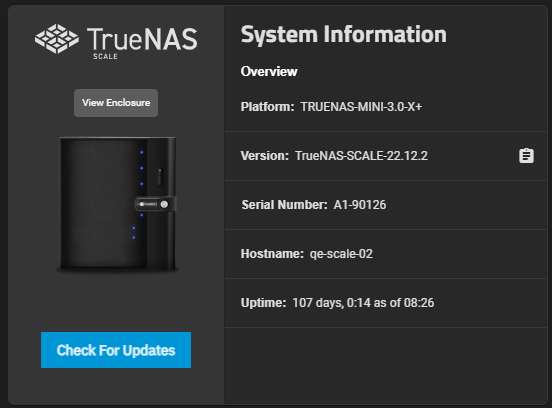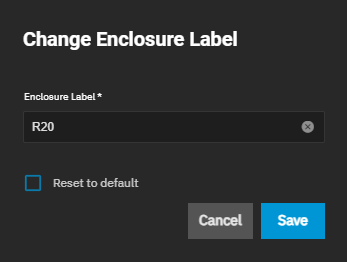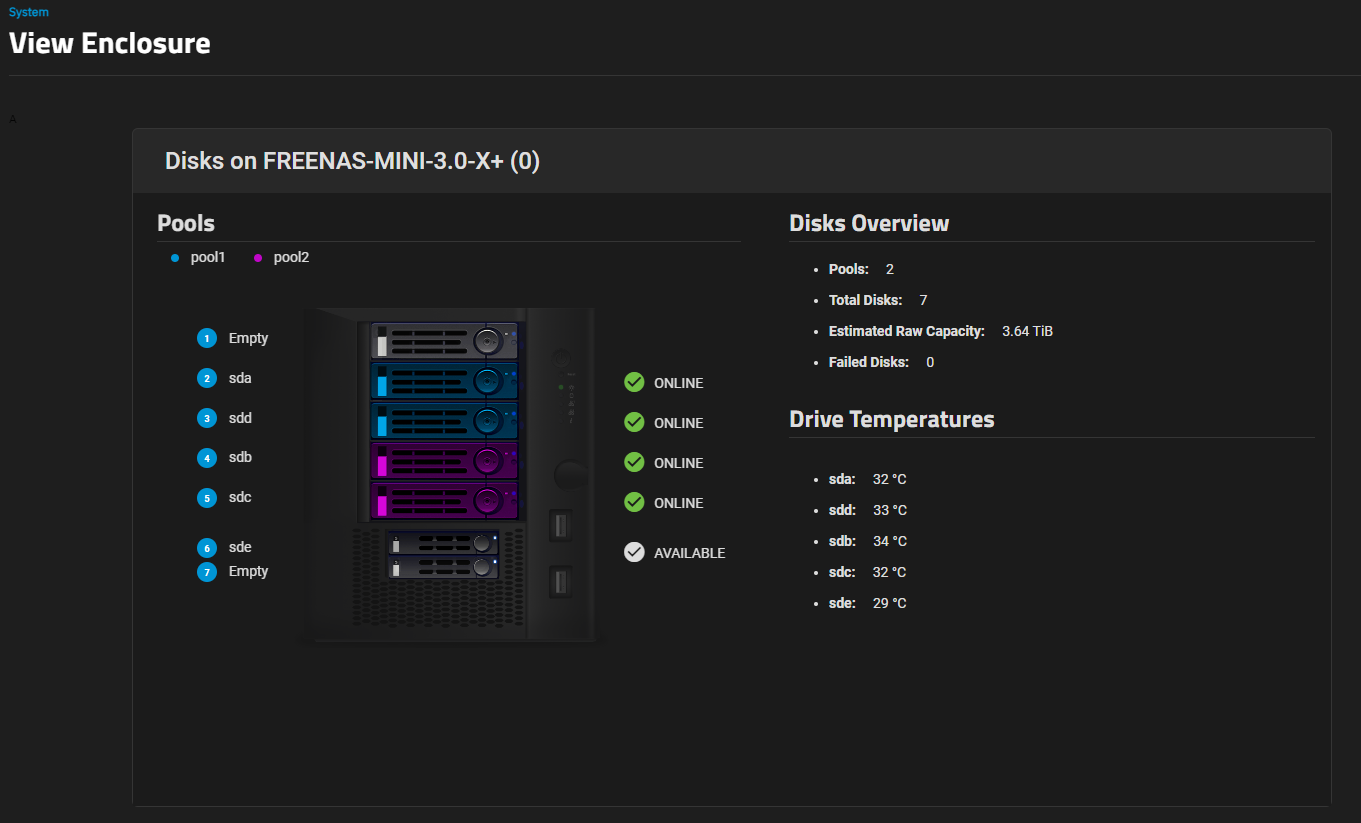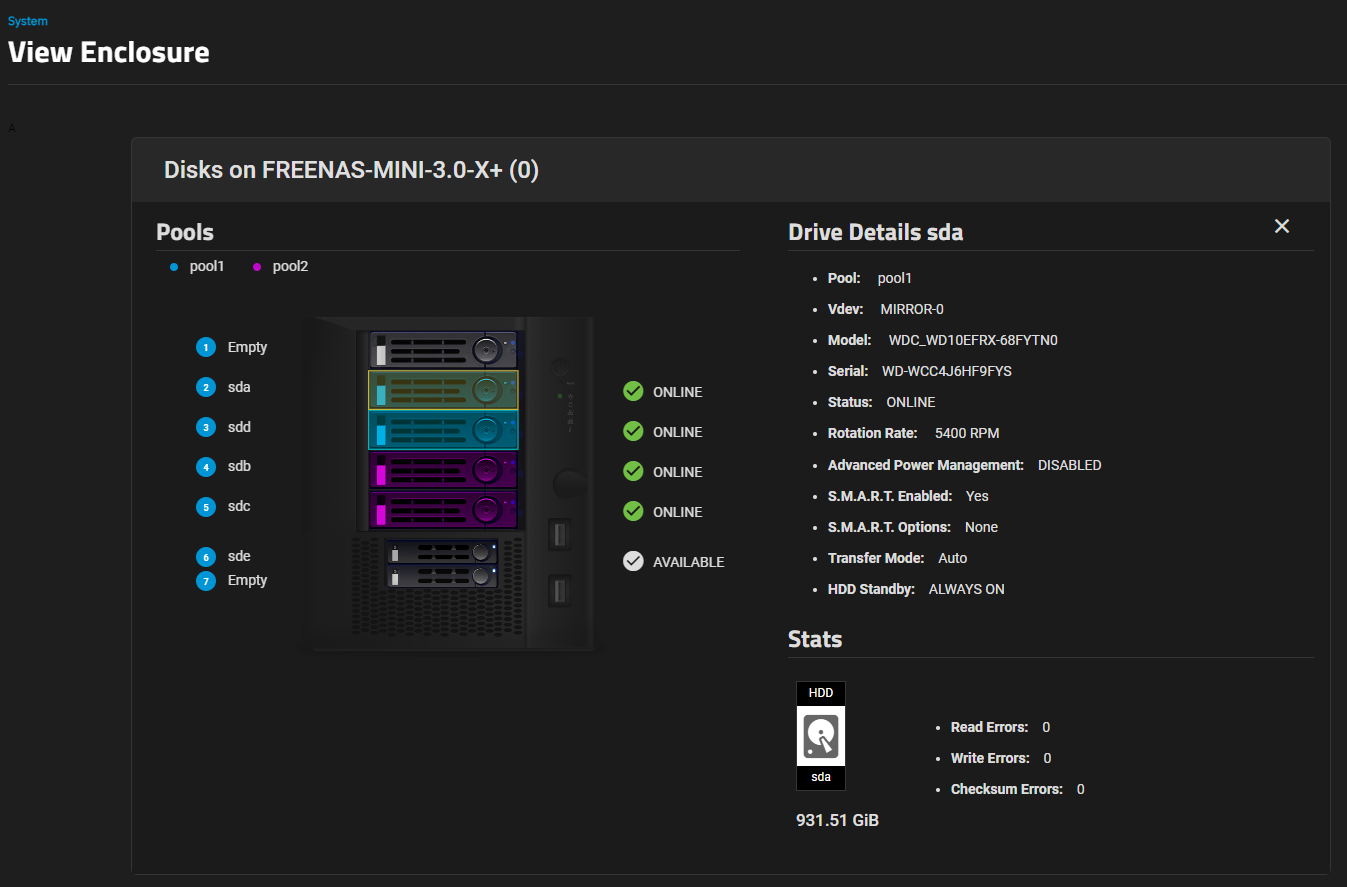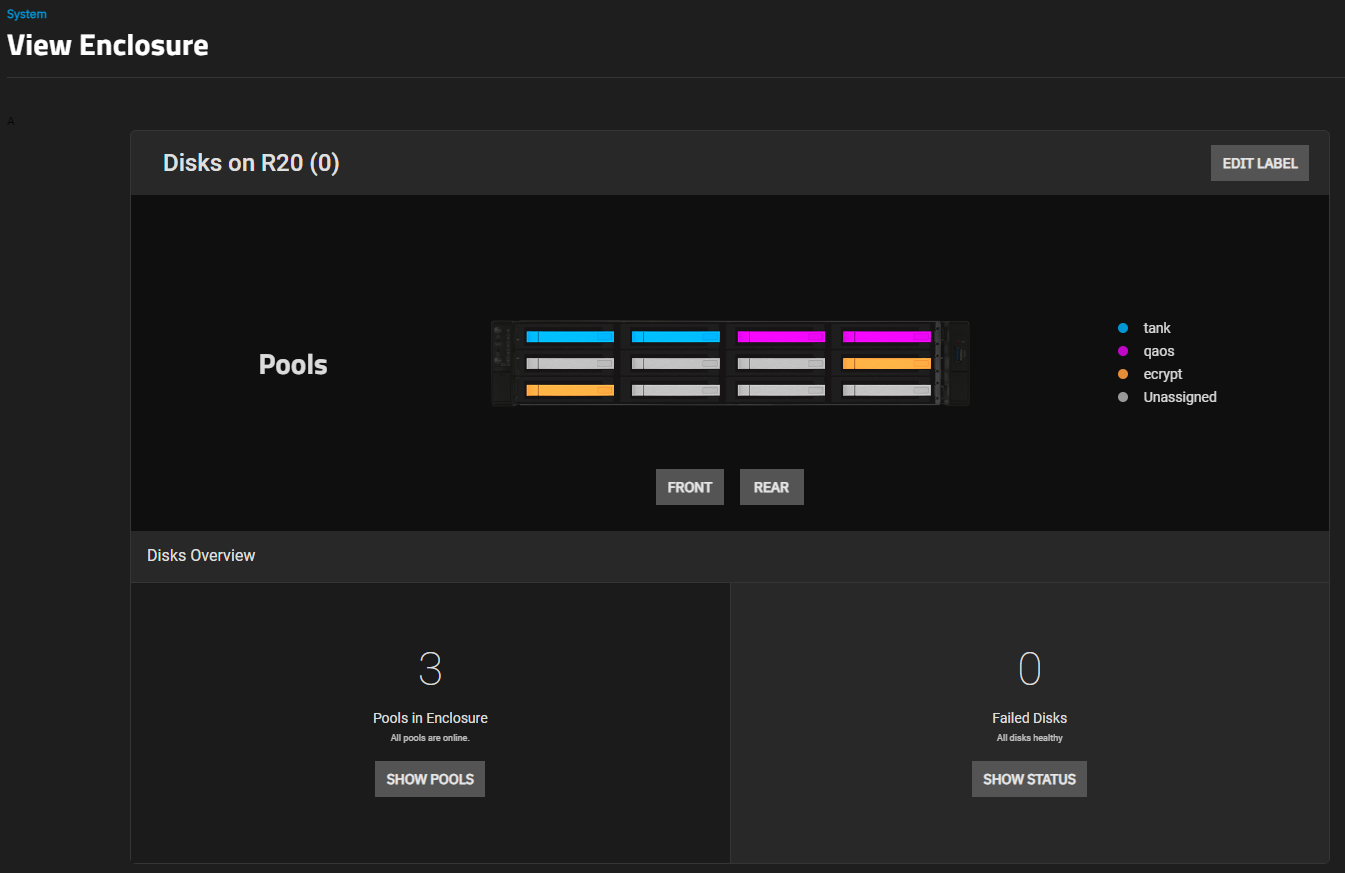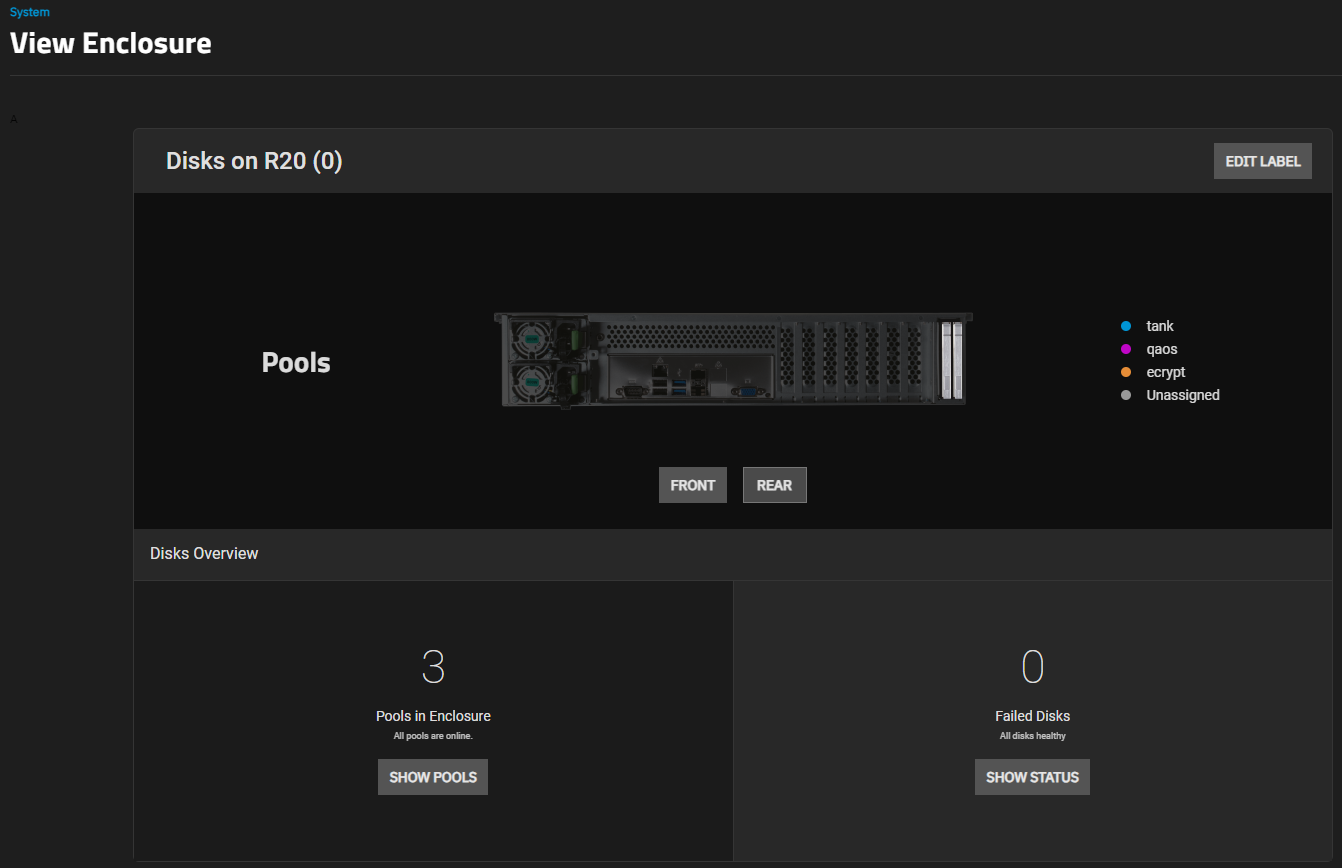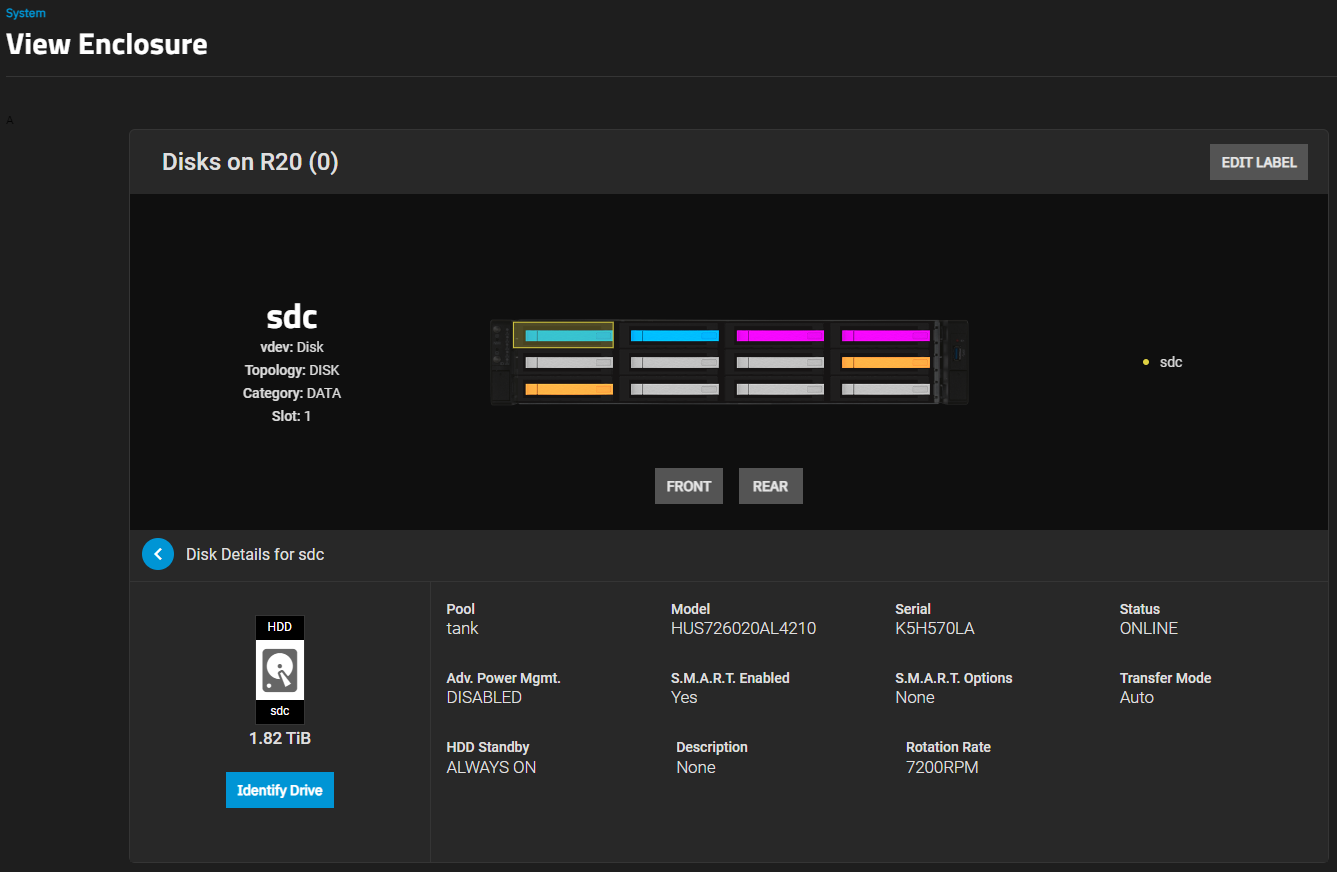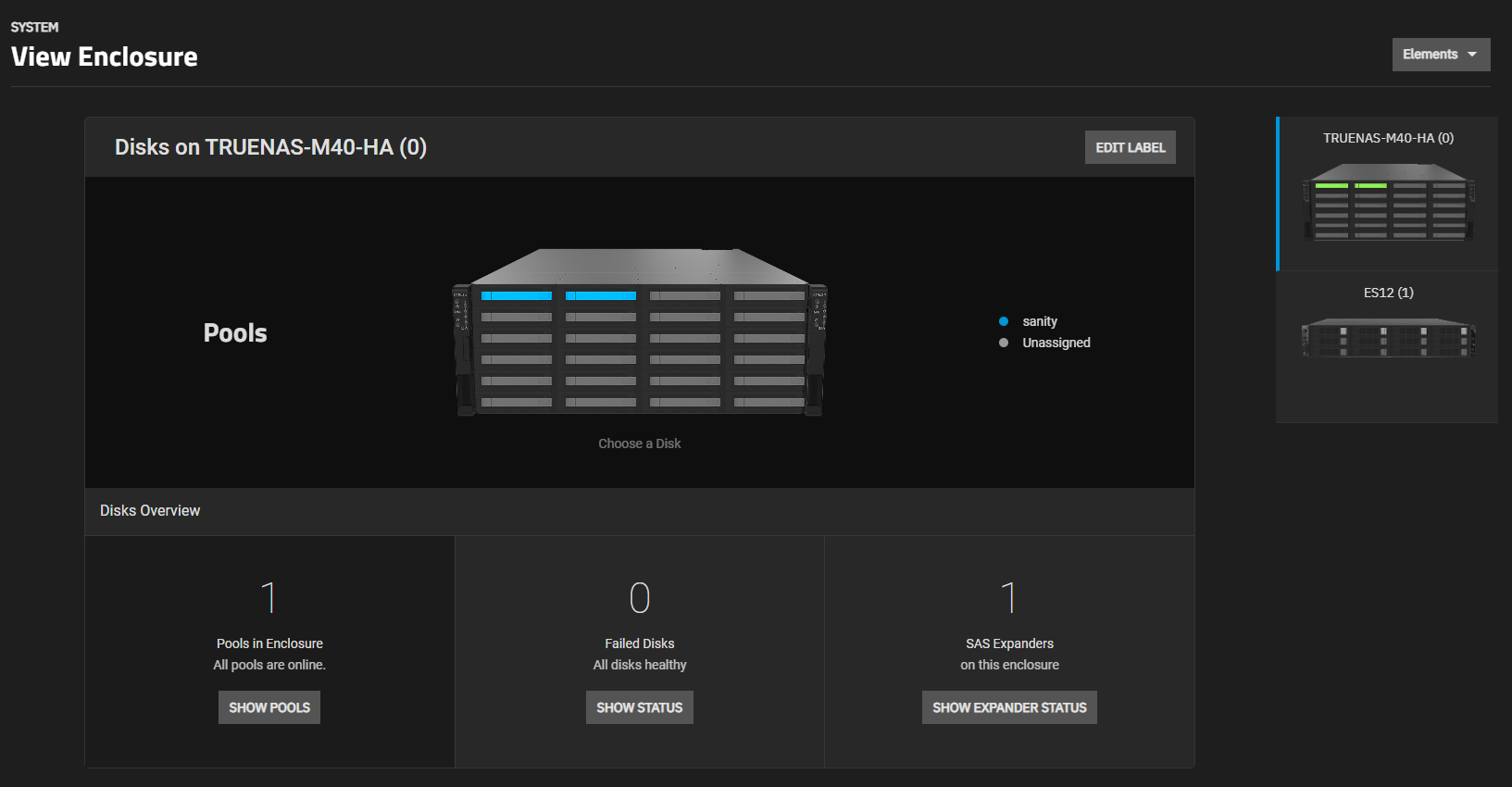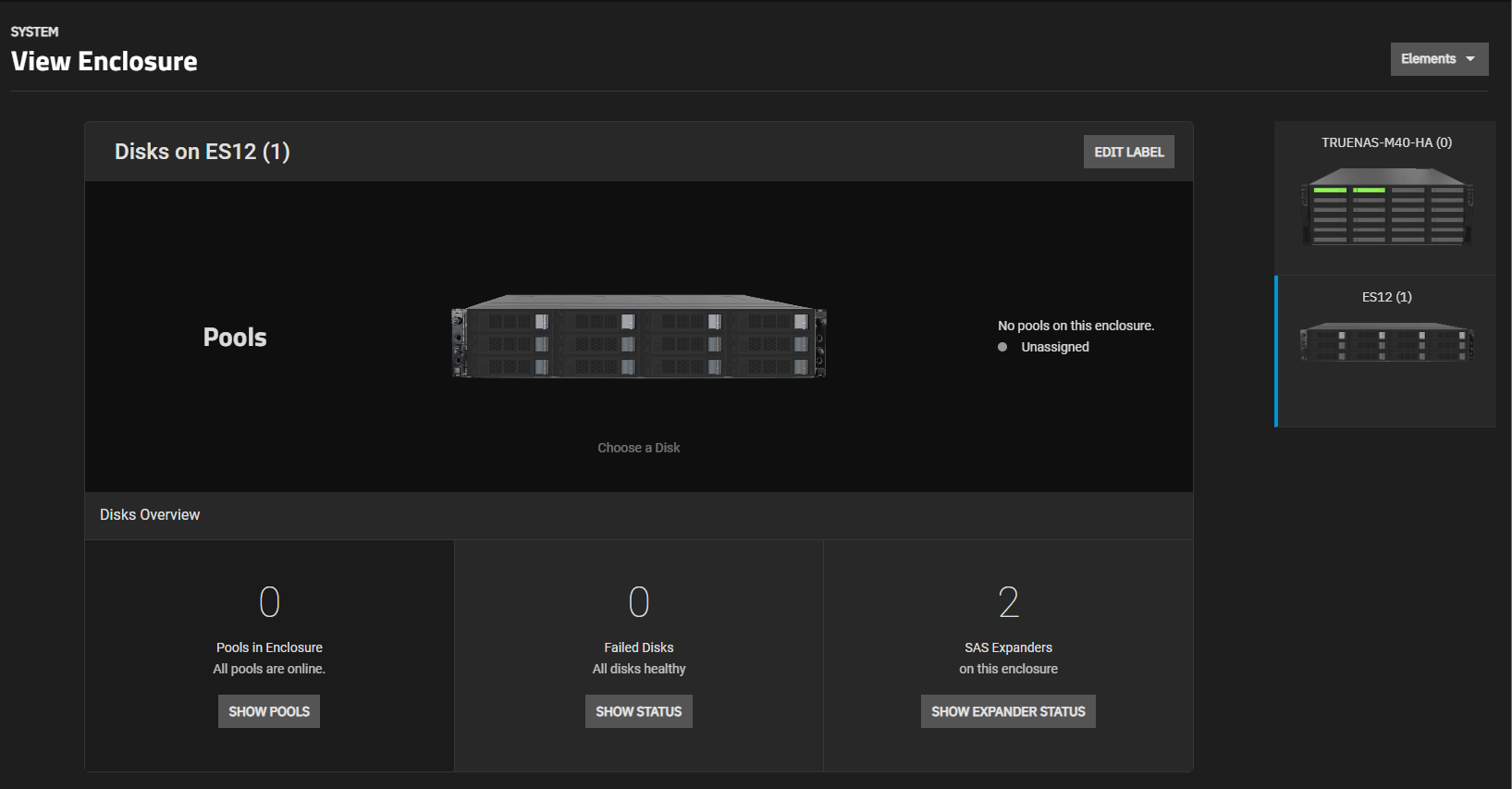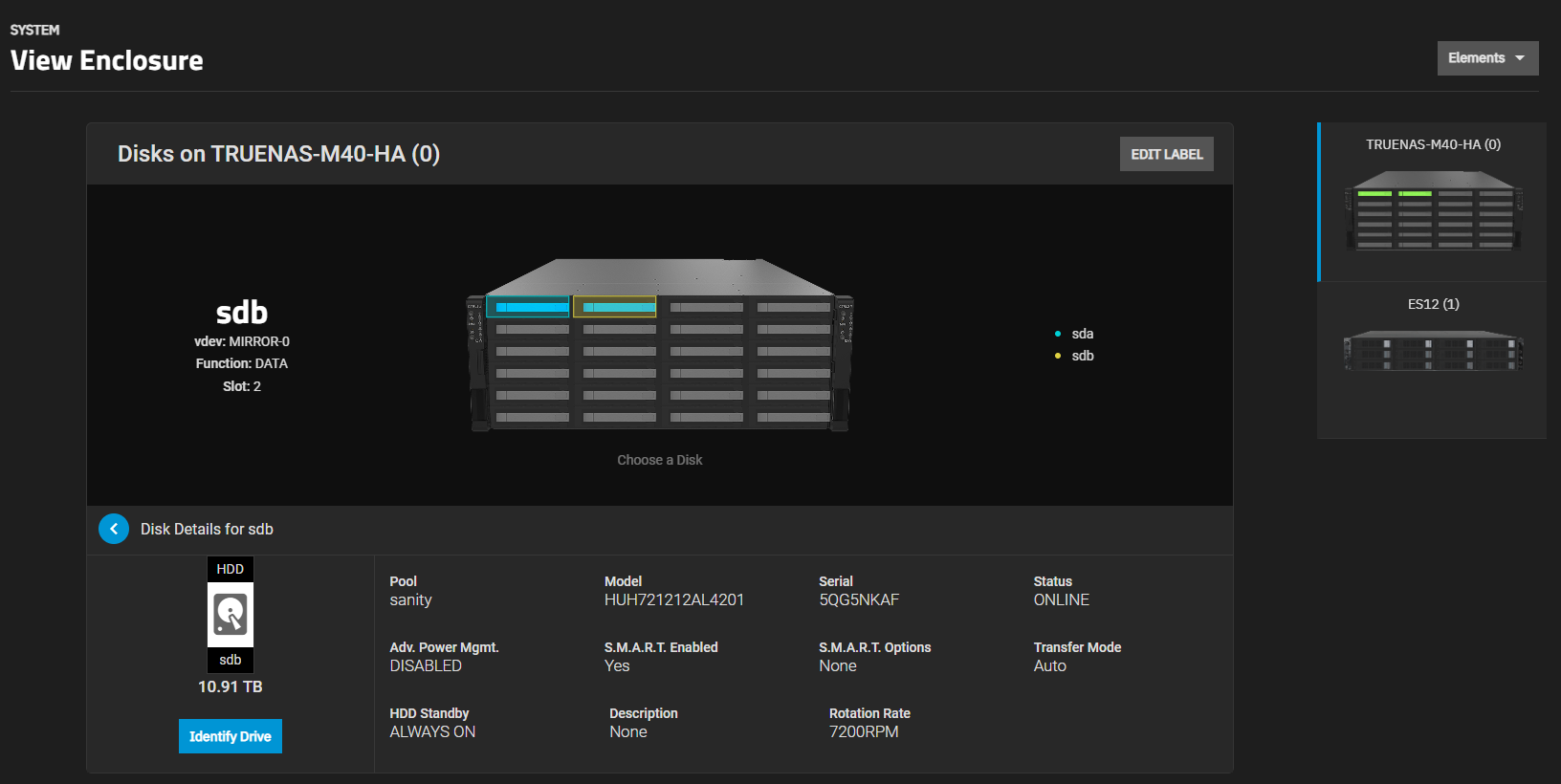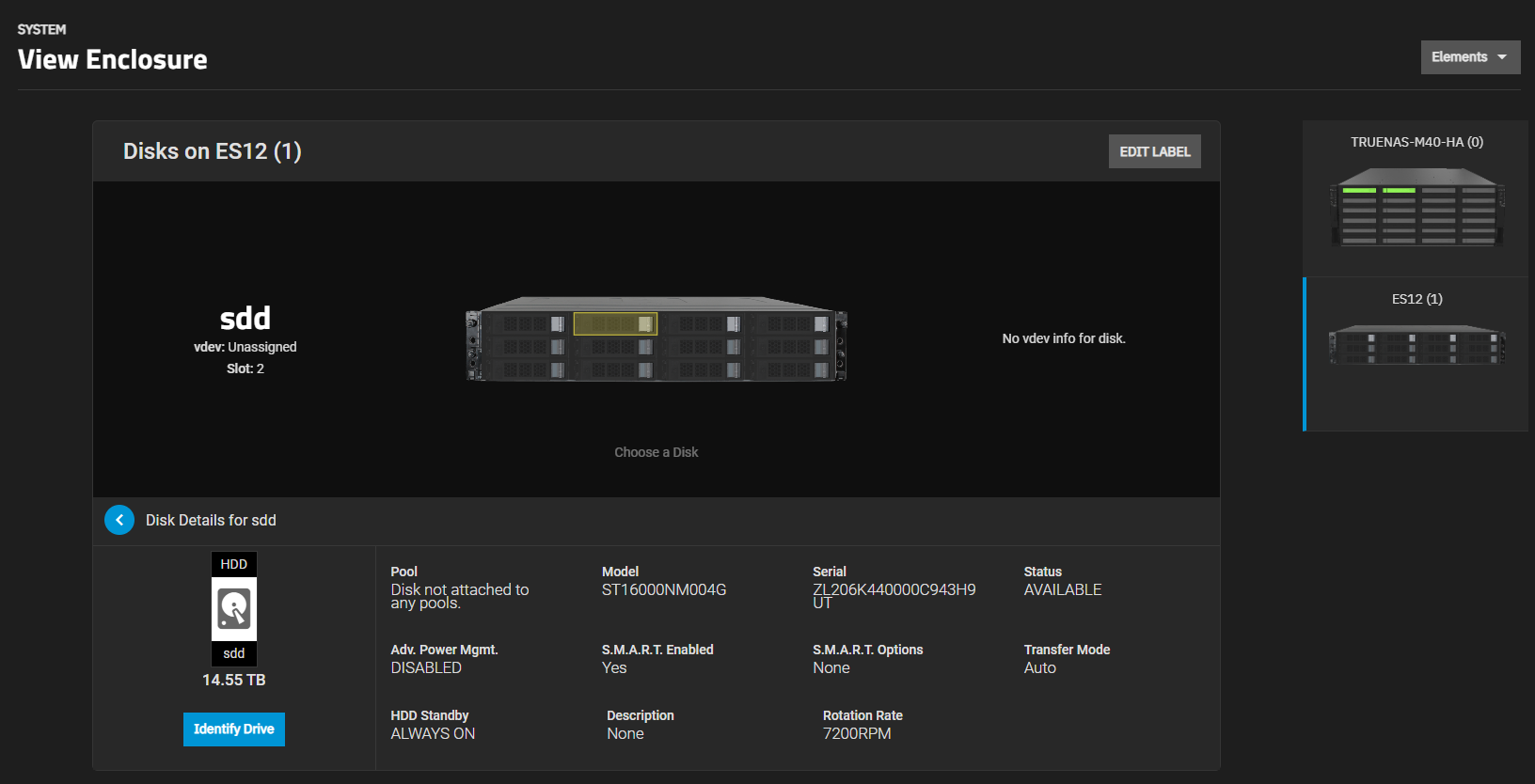TrueNAS Documentation Archive
This content follows the TrueNAS 23.10 (Cobia) releases. Archival documentation is provided for reference only and not actively maintained. Use the Product and Version selectors above to view content specific to different TrueNAS software or major version.
View Enclosure Screen (Enterprise Only)
5 minute read.
Last Modified 2023-08-24 15:28 EDTTrueNAS Enterprise
The View Enclosure screen only displays on TrueNAS SCALE Enterprise systems with compatible hardware. The UI options to select System Settings > Enclosure is not present on incompatible non-Enterprise systems.
The System Information widget on the main Dashboard displays an image of the specific TrueNAS system. Hover the mouse over the image to see the View Enclosure label. Click anywhere on the system image to open the View Enclosure screen.
The View Enclosure screen displays an image of the TrueNAS platform. Additional information about storage pools, drives, and other hardware components is available through a variety of clickable elements and buttons.
The Elements button at the top right of the View Enclosure screen displays a dropdown list of options to view information about the system or expansion shelf. The options vary by TrueNAS platform, if the system is connected to expansion shelves, and if you have an expansion shelf image selected instead of the main system. All TrueNAS systems include the Disks option. TrueNAS systems with expansion shelves include the Temperature, Power Supply, and Voltage options. The expansion shelf includes the Disks, Cooling, Services, Power Supply, SAS, Temperature, and Voltage options. Each option displays a table with readings from the system’s internal components taken over a period of time.
System images display the front view of the server by default. If the system model includes a rear view, Rear changes the image to the rear view of the system hardware. Front switches to the front view of the system chassis. Edit Label displays for system models other than the Mini.
Edit Label opens the Change Enclosure Label window. Type a name or description for the system and click Save to apply the label. Reset to Default restores the default name for the system.
System image screen include two options to change the information on the screen:
- Show Pools that highlights disks in pools on the system image.
- Show Status that shows healthy disks in the system and a status indicator color legend.
Click on a drive image to display a screen with information for that drive. Disk drive information includes the system pool, disk status, hardware details, and stats for the drive.
Identify Drive on disk detail screens turns on the LED indicator located on a physical drive bay in the system server. This helps to identify the physical drive bay that corresponds to the SCALE identification number for that drive. Select the drive on the image and then click Identify Drive. Go to the location of the system server to locate the drive bay with the LED indication turned on then check the drive location on the View Enclosure screen.
TrueNAS Mini and R30 systems do not include the IDENTIFY DRIVE function.
TrueNAS Mini systems only display the front view of the system hardware.
Pool information displays at the top of the screen. The drive bay number and disk label displays to the left of the image and the status to the right of the image. A disk image screen shows details for the drive you click on. The Disk Overview section provides general details about the system drive hardware and capacity. Drive Temperatures displays current readings for each drive in the system.
Larger TrueNAS hardware system images include a front and rear view of the chassis to show all drive bays and installed disk drives.
Click on a drive to display details for that selected drive and to access the Identify Drive option.
The screen opens showing the front view of the main image by default. Both the system and expansion shelf images show the location installed disks.
The screen includes smaller images of both the main system and expansion shelves connected to the system, on the right side of the screen. A blue vertical line to the left of the small image on the right side of the screen indicates the selected system view.
The system and expansion shelf image screens include three options to change the information shown on the screen:
- Show Pools that shows disks in pools on the system or expansion shelf image.
- Show Status that shows healthy disks in the system or expansion shelf image, and a status indicator color legend.
- Show Expander Status that shows the status of SAS expanders in the system or expansion shelf (only systems with an expansion shelf).
Click on a drive image in the system or expansion shelf image to display a drive information screen for that drive. Disk drive information includes the system pool, disk status, hardware details, and stats for the drive.
The expansion shelf image varies based on the type of expansion shelf installed, but the disk information displayed is the same as for disks in other system disks.
Related Enterprise Articles
- Main Dashboard
- Updating SCALE Enterprise HA
- First Time Login
- Managing Network Settings (Enterprise HA)
- Failover Screen
- Failover
- Configuring KMIP
- KMIP
- KMIP Screen




